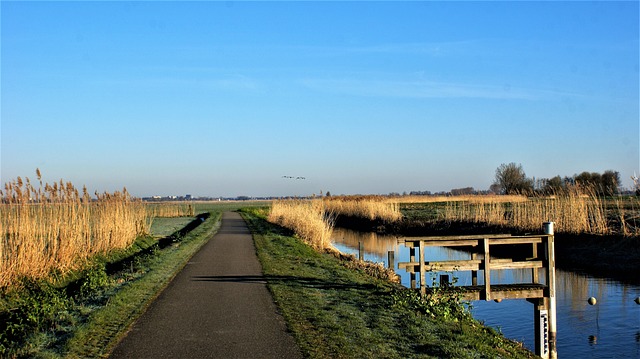Gez Medinger, creator of more than 90 video interview podcasts on Long Covid, strongly recommends visiting your medical practitioner if you have symptoms related to this emerging illness. He also suggests that any medication should be supplemented by whatever way you find useful to calm your autonomous nervous system. He argues that there is no recovery from Long Covid without calming the mind and body because the illness is a form of inflammation affecting multiple parts of our human makeup (as reflected in the more than 200 systems identified as being associated with Long Covid). The illness creates pain because of over-activation of nerves in multiple parts of the body (the body goes into a fight/flight response). Dr. Deepak Ravindran, pain management expert and Head of a Long Covid Clinic, encourages the use of gentle mind/body practices such as Tai Chi to aid the management of pain and overall recovery.
After interviewing yoga teacher Suzy Bolt in one of his podcast interviews, Gez strongly advocates her course, Rest, Repair, Recover Programme, as a pathway to recovery from Long Covid. Suzy’s Programme incorporates yoga, breath techniques, meditation and other mindfulness practices. She also provides a community of people who are currently experiencing Long Covid or have recovered from it and who readily provide supportive relationships by sharing their own experience of what works for them and offering encouragement and inspiration. The three different levels within the Programme cater for everyone, irrespective of their physical limitations or mobility issues.
Evidence of the effectiveness of the Rest, Relax, Recover Programme (incorporating mindfulness)
Of particular note, is Suzy’s interview with a course participant Joe Iddison and world famous cardiologist, Dr. Boon Lim. In the video interview, Joe talks about his recovery journey from Long Covid with the aid of Suzy’s Programme and Boon’s medical advice. Joe had experienced multiple Long Covid symptoms including PoTS, brain fog, fatigue and insomnia. Boon recommended Suzy’s Programme because of the many reports he had been receiving from his patients who had recovered from Long Covid with the aid of medication and the Programme. He indicated that he meditated a number of times each day in his busy cardiac practice.
Suzy herself had recovered from extreme symptoms of Long Covid and her capacity to launch and manage her Programmes with the aid of other professionals, bears witness to the power of her approach. She stressed the value of her Programme in helping people deal not only with the physical side of the condition but also the mental and emotional side. Long Covid can negatively impact your role, self-identity, work and home activities (including caring for children) – some people, for example, are so ill that they cannot get out of bed (and you can see them participating in Suzy’s Programme from their bed). People, too, experience fear and anxiety as a result of the uncertainty and lack of understanding of the illness (from doctors, family, bosses, colleagues and friends). Mindfulness has been shown to help people manage their anxiety.
While participating in the Programme in real time is desirable for the community connection, the Programme’s effectiveness can also be realised through accessing the resources provided after the activities have been completed live. Suzy offers an on-demand version of the Programme, at a reduced rate, for people who cannot attend live because of family or work commitments or time differences (the Programme is offered according to the UK time zone). Joe attests to the effectiveness of the on-demand Programme because that is the version he used for his recovery from extreme Long Covid symptoms. He indicated in the interview mentioned above that he undertook one activity per day drawing on the Programme’s resources (e.g., yoga, breathing techniques, meditation or listening to the group discussion).
Developing a positive mindset
A key element in the Suzy’s Rest, Relax, Recover Programme is the power to create hope in participants. This is generated through Suzy’s positivity, the community support and the video testimonials and education provided by participants and medical practitioners. A key element in recovery from Long Covid is a positive mindset because this determines whether or not you will make the necessary adjustments to your lifestyle to aid recovery. Debbie Geraghty, for example, shares her recovery story and emphasises the importance of being positive and tapping into something that you love such as dance, creativity, and/or connection.
Deepak Ravindran, Long Covid and pain management expert mentioned earlier, has written a book, The Pain-Free Mindset: 7 Steps to Taking Control and Overcoming Chronic Pain, which is available in Paperback or as an e-book. Deepak also mentioned in the interview with Suzy that he has obtained funding to support his patients to be able to do seated Tai Chi.
Reflection
The inability of many doctors to understand the nature and complexity of Long Covid has left their patients confused and uncertain. Gez Medinger commented during the Long Haul & CFS Summit that the specialization of medicine has contributed to this. He stated that many medical practitioners are “inadequately equipped” to take on Long Covid because it is a “multi-system, multi-factorial, multi-organ” condition. Too often, a medical practitioner will focus on a particular symptom that they know how to address but fail to identify the root cause of the overall debilitating condition. There are clearly exceptions to this, including Dr. Deepak Ravindran and Dr. Boon Lim.
It is important, however, to establish whether other factors (such as nutrient deficiency, undiagnosed cardiac illness or structural problems) are causing and/or contributing to our emerging symptoms. Leading neurologist, Dr. Shanna Patterson, in a video interview podcast for the Foundation for Peripheral Neuropathy, emphasised that scientists are reluctant to attribute peripheral neuropathy to Long Covid without supportive scientific evidence (because there are many possible causes of this condition).
However, individuals who are suffering from other identified Long Covid symptoms report experiencing peripheral neuropathy in the form of numbness, pain or tingling in their arms, legs or feet. Shanna encourages people to explore different forms of diagnosis with their doctor to determine the type of neuropathy involved and to identify appropriate treatment options. She indicated that blood tests, for example, can highlight whether diabetes, thyroid problems or vitamin deficiency is contributing to the neuropathy.
As I have experienced peripheral neuropathy and a mild form of post-exertion malaise, I have recently approached a medical practitioner who is very experienced and qualified both as a General Practitioner and an Occupational and Environmental Physician. I have undergone a series of tests for my current condition under his guidance. I have simultaneously registered for the on-demand version of Suzy’s Rest, Relax, Recover Programme (the timing of the live sessions does not suit people living in Brisbane, Australia).
I have a firm belief that as I grow in mindfulness – through breathwork, meditation, Tai Chi and other mindfulness practices – I will be able to calm my autonomous nervous system, develop confidence and hope and facilitate my body’s self-healing properties. I look forward to engaging with the training provided by Suzy and her professional colleagues and learning from the experience (and success) of others who have suffered from Long Covid. Suzy reinforces the view that breath is “the bridge between mind and body” and that we can slow both our mind and body by consciously slowing our breath. Suzy’s YouTube Channel, with free resources such as podcast interviews with leading experts and sample classes, is located here.
Alexia Chellun’s Healing Song is very apt at this point as it incorporates the mantra:
“My body, mind and spirit are healthy”.
________________________________
Image by Zhu Bing from Pixabay
By Ron Passfield – Copyright (Creative Commons license, Attribution–Non Commercial–No Derivatives)
Disclosure: If you purchase a product through this site, I may earn a commission which will help to pay for the site, the associated Meetup group, and the resources to support the blog.










